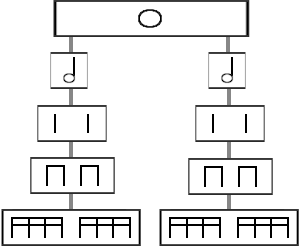|
This site is best viewed at |
|
Reading rhythm is as simple as looking at sticks. The rhythm of a song is determined by the stems of the notes. Each type of stem has both a real name and a nick-name. We use the nick-name to help us recite the rhythm pattern. The basic elements of rhythm are:
In addition to the rhythms above, there are two examples that use the note head to determine the rhythm. These are:
Now that you know the basic elements of rhythm, we can combine them to make patterns. To hear some common patterns, press the play button. If you experience any problems playing the audio clip, you may need to check your audio settings. Some of the most common rhythm patterns are:
All rhythm elements relate to each other. Here is a chart which shows how each rhythm element is apart of another.
|
|
©2005-2009 Nancy Philbeck |

